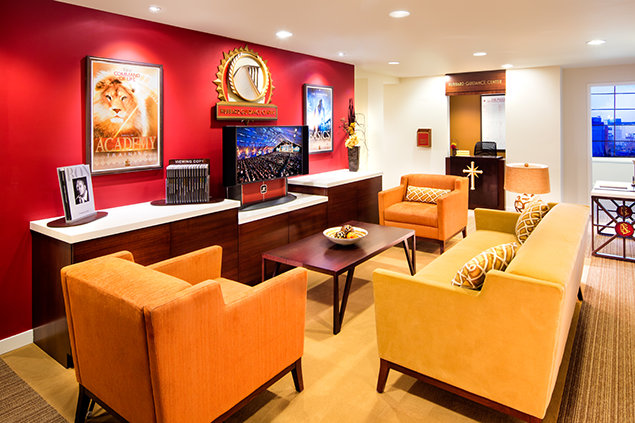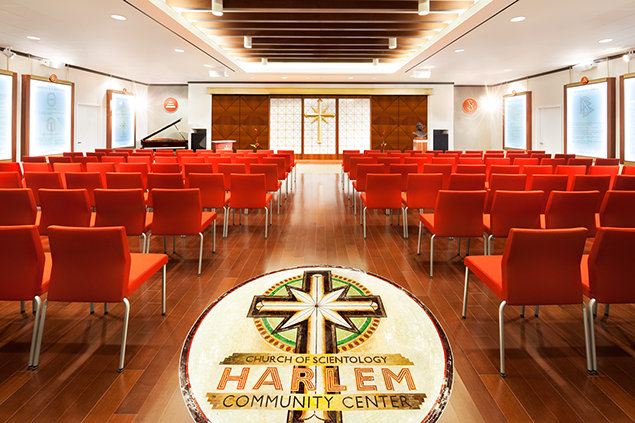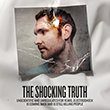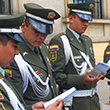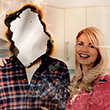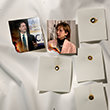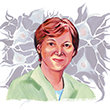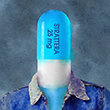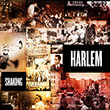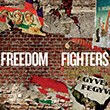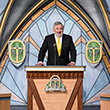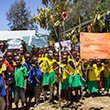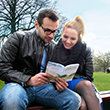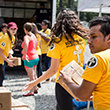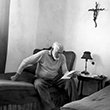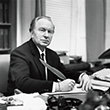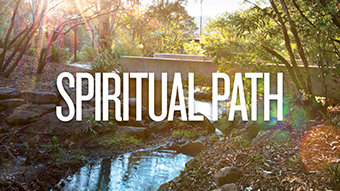It didn’t take long. Within hours of Scientology opening a new Church in Harlem—along with a Community Center—humanitarian projects were being conceived, started up and thrown into high gear.
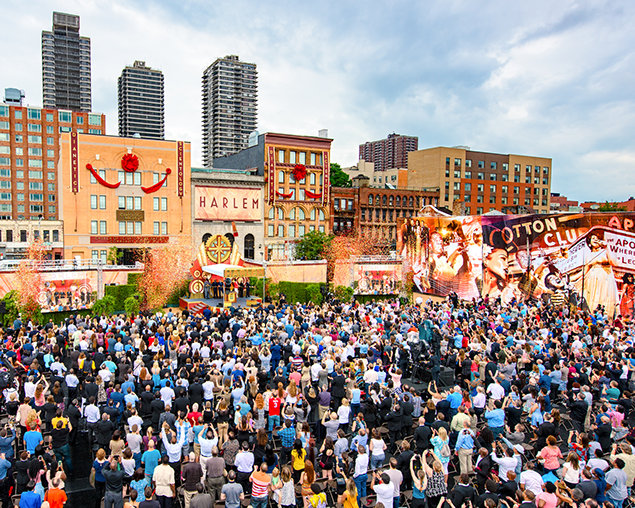
And what could be a better ground zero for turning society’s ruin into a golden era. After all, Harlem defines a constantly unfolding golden era—a succession of cultural high points for more than a century. From the Cotton Club to the Apollo Theater, few areas are so synonymous with breaking free of chains and striving for greatness. Artistic, cultural, literary, financial, human rights, dignity—greatness.
There was one Harlem Renaissance in the 1930s, a truly wondrous era. That spirit is back, and the Church of Scientology is there to pitch in. Take, for example, the 13th annual International Human Rights Summit held in August at United Nations headquarters in Manhattan. The Summit, organized by the Church-sponsored Youth for Human Rights International, drew more than 70 young men and women from 41 nations to the new Harlem Church’s Community Center to add their voices advocating for liberty and freedom across the globe. Among the speakers was Harlem’s Community Mayor and Ambassador of Goodwill to Africa, Queen Mother Dr. Delois Blakely. Dr. Blakely offered her support to the Center’s spark of new life to Harlem.
One event followed another at the Scientology Church and Community Center. What could be a better tribute to Harlem than jazz—so famed musicians Chick Corea and Stanley Clarke came for a concert. A few days later, the Citizens Commission on Human Rights brought a host of dignitaries to counter Big Psych’s plan for mind-destroying brain implants and Big Pharma’s schemes to hook people on toxic psychiatric drugs. There were meetings with Truth About Drugs volunteers, reggae performances, a Congressional testimonial on the new Church, planning a film on human trafficking, and on and on. And we’re talking about just the first weeks after the day the new Church and Community Center opened their doors to Harlem.
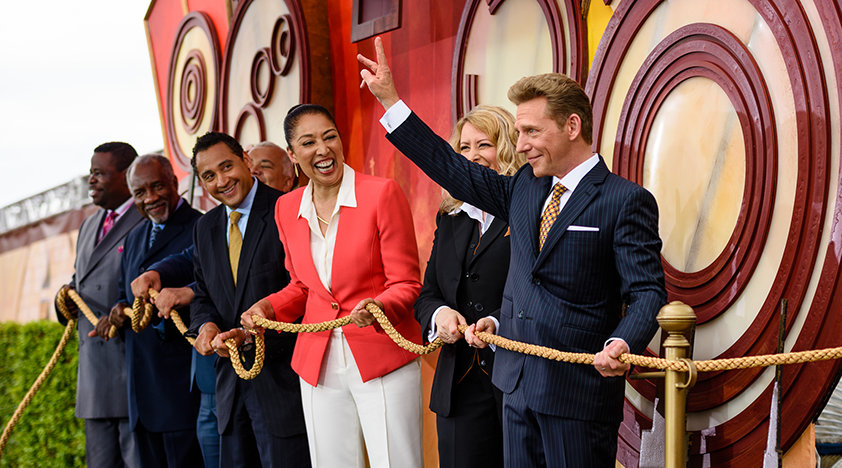
THE RAIN WENT AWAY
It was on Sunday, July 31, 2016, at precisely 12:51p.m.—nine minutes before the opening ceremony was to begin—an 18-hour deluge that had prompted an unusual-for-summer flash flood warning for the New York City area ended as if on cue. The seating for the event, like everything in New York City, was close quarters, so the overflow audience, tightly packed into a temporary outdoor theater, was delighted at the prospect of being able to lower their umbrellas as dancers began to move to the music, and rapper Doug E. Fresh let loose with a rhyme whose beat and words electrified this latest, and perhaps most unusual, Church opening.
The 53rd new Church of Scientology Organization to open worldwide since 2003, the Harlem Church, with its vibrant, neighboring Community Center, came to life.
The new Churches are planned as L. Ron Hubbard prescribed when envisioning Scientology Churches decades ago. The 66,500-square-foot Harlem Church is big enough to accommodate a crowd without feeling cramped, and it utilizes a frictionless and logical-flow design to move people through a Public Information Center, Registration and Introductory Services and up to the Academy and Hubbard Guidance Center where spiritual counseling, or auditing, is delivered. It facilitates maximum crowd with minimum effort. Harlem, in the tradition of New York City, utilizes six floors of vertical space to introduce the curious to Scientology, and to swiftly move parishioners up what is known in Scientology as the Bridge to Total Freedom. Yet it is the accompanying expansive Community Center that makes this latest Church so different.
Kumi Kimball, Executive Director of the Church’s evening and weekend operations, served as the event’s master of ceremonies. She laid out the nuts and bolts of the new Church: “A Public Information Center presenting our basic beliefs and full scope of humanitarian programs; a dedicated Tutoring Center for all residents to renew or rebuild an education; three entire floors dedicated to Introductory Services; an Academy for training up to 250 auditors [spiritual counselors] at a time; and a staff of over 200 intensively trained in the application of the religious technology, including more than 25 auditors.”
THERE IS A ROSE IN SPANISH HARLEM
The idea behind this 1960 hit from The Drifters’ Ben E. King is that roses grow even in the least likely places. In this case, a garden made of concrete and steel.
Lori Alpers, executive director of daytime operations at the Harlem Church, said, “The entire Scientology community in New York, as well as Churches from all over the East Coast, banded together to help us create this Church. It’s not just for Harlem, but for Black America. The reach for the solutions we have is very strong in the community. With the new Church and the Community Center, we will deliver those solutions on a never-before-seen scale.”
The glue that holds the African-American community together is its spirituality. It’s why LRH spoke of his great admiration for the Black culture of integrity, diligence and hard work—even under the thumb of oppression—and his intention that they “truly walk in the sun and take their place among the most brilliant people of Earth.”
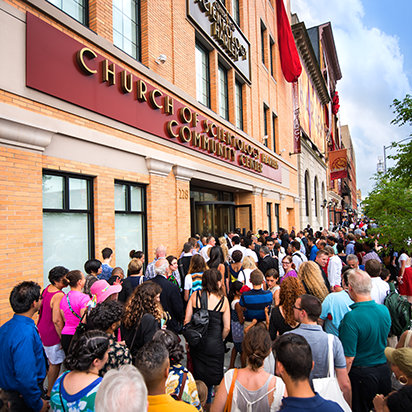
East Harlem, or Spanish Harlem, as it is also known, is now a multicultural mix of Black and Hispanic—two cultures that share the values of spirituality and hard work. Both have suffered the damaging influence of hateful racial prejudice. Both have also endured one of the more subtle forms of racism, educational disenfranchisement. For many, it is bleak school buildings, poor instructors and a lack of modern technology. For some it is the misdiagnosis of learning disabilities that would be better ascribed to the surroundings than the aptitude of the students. The new Tutoring Center, dedicated to literacy and learning, gives both children and adults educational opportunities they have not known before.
Incarceration is a dominant fact of life if you’re a young man of color, and recidivism is just a fancy word for “revolving door” if you’re out of prison and unemployable. It’s hard to imagine a better fit for Criminon, the Church-supported program dedicated to educating, re-educating and generally re-integrating into society those who have served, or are serving time in prison.
Regardless of the symptoms of societal ills, or their causes, Scientology comes with a big toolkit, varied in its methods, and sure-fire in its results.
The Rev. Joseph Jones, Human Rights Ambassador & 70th Precinct Clergy Council Member, New York City, has for decades also volunteered his time to his community through work on various boards and citizens outreach committees for the Kings County District Attorney’s office. Jones noted, “We’re here to stake a claim for a tomorrow of our own design. And it’s a tomorrow inscribed with that term: ‘Human Rights!’”
Jones spoke of the Scientology Church-sponsored United for Human Rights educational program as a crucial factor. “I did my own research and I recognized that you were leading the human rights charge all over the world,” he said.
“That when it came to bringing every human being the knowledge of their rights, and without some other dogma attached, there ain’t nothing out there like it.”
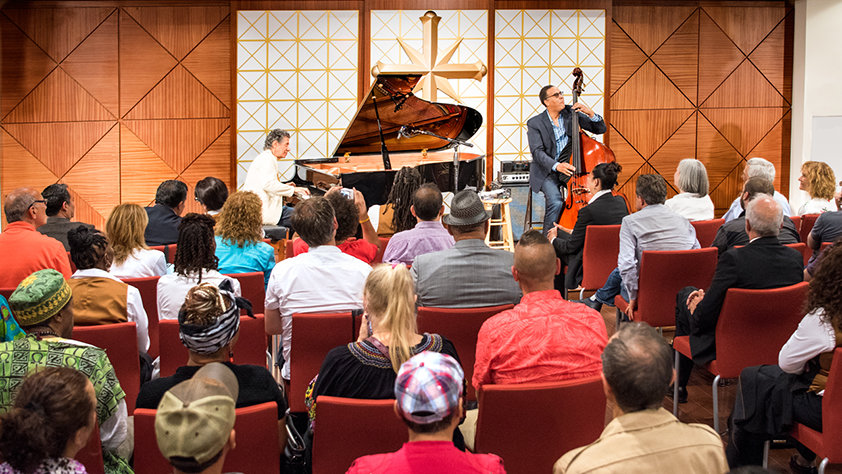
WHEN HARLEM MOVES, THE WHOLE WORLD SHAKES
It might seem apparent that any church, social betterment organization, government, etc., would, before planting itself in a community, ask exactly where it might do the most good, but often the common sense answer is not so obvious. Like businesses, churches often save their money and build in the toniest neighborhoods and leafiest suburbs. Fortunately, under the direction of Scientology ecclesiastical leader, David Miscavige, the Church looked before it leaped, and with solemn recognition, knew Harlem would benefit from a Community Center dedicated to multi-denominational, community-wide access. In short, an oasis of compassion and sanity, in a world gone mad. A place where all are welcome, regardless of social standing, income or education.
It is no accident then that the new Harlem Church has a companion Community Center. It is from the Community Center that Scientology’s social betterment and humanitarian projects will emanate. L. Ron Hubbard envisioned a world where all religious denominations work together toward their common goals. This new Church’s Community Center fulfills a big part of the Harlem Church’s mission to unite the community.
There are boardrooms, conversation areas, classrooms and an inviting café, all intended to bring community leaders into a productive and comfortable environment where they can strategize, organize and implement their plans.
Assemblyman Robert Rodriguez represents East Harlem, and he provided context for the importance of building this new Church and Community Center there: “125th Street presents all that is good and bad in a city. It’s the hub of Harlem’s cultural icons and commercial activity and trade. But it’s also home to a number of social ills including drug addiction, criminality and homelessness. I believe that by simply opening your doors you are going to be impacting this community. And when you add to that tutoring opportunities to strengthen an education, lectures and workshops for life skills, courses on basics of living or even a friendly word of advice—this center will be a beacon of hope on 125th Street!
“We have some fertile ground here. When Harlem moves, the whole world shakes. So as we successfully raise up corners of this community, not only can we help revitalize Harlem, but you can bring what we learn to urban areas all over the world, and that’s how you turn around an entire culture.”
THE WAY TO HAPPINESS
In communities like Harlem, where poverty and single-parent households go hand in hand, where homelessness rivals foster homes for the bottom rung on society’s ladder, Scientology has answers like The Way to Happiness, L. Ron Hubbard’s common sense guide to better living. Over 24,000 copies are already in circulation there, and with the new Church and Community Center, more are surely on the way.
Only in Inglewood, California (Los Angeles), does another Church of Scientology Community Center exist—and it not only shares the same lofty outreach goals, but it has proven a catalyst for positive change in South LA where the problems of drugs, gangs, illiteracy and hopelessness are manifest, as in Harlem. The Way to Happiness has been an essential part of that change.
Raphael Benavides, president of the East Harlem Merchants Association, brimmed with hope when he said, “Inside this Center are tools for making a community thrive. And none more so than that special booklet: The Way to Happiness. When I first discovered it, I saw how The Way to Happiness was already affecting our community.
“You’re out there giving this booklet to people—a pocketbook for living. And from law enforcement to businesses and organizations, the whole community is now taking it on! When an individual gets their hands on The Way to Happiness, they value it. I know I cherish my copy. And as they read it, it becomes a part of their routine—reading it once a week, even once a day. It becomes a part of them, shifting their mindset so they can behave and react differently in life—react toward success.
“You can change a whole life by helping someone recognize: ‘Hey it’s within your reach, within your power to control a situation in your life.’ That changes how a human being perceives the world and how they take up their role in society. With that, people start making the right choices in life. And the result, is The Way to Happiness empowering our community!”
The tools available for social betterment such as The Way To Happiness, Drug-Free World and the various literacy programs from Applied Scholastics and beyond, will make a big difference.
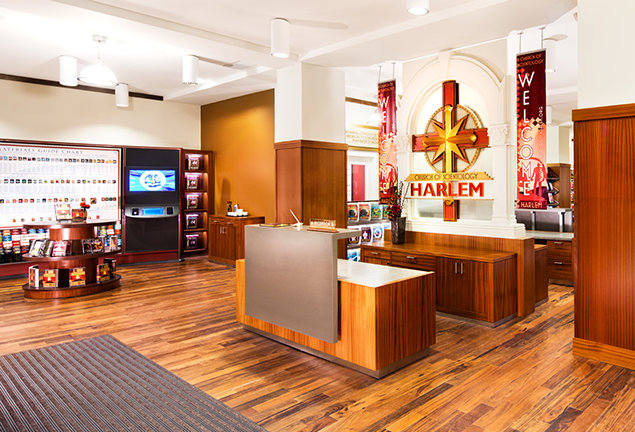
THE WAY TO ENLIGHTENMENT
The compatibility between other religions and Scientology was manifest when the Rev. Johnny Ray Youngblood, subject of the acclaimed book, Upon This Rock: The Miracles of a Black Church explained how Scientology is working hard to better the community. As Senior Pastor of Brooklyn’s St. Paul Community Baptist Church for nearly 40 years, and the current Executive Pastor of the famous Mt. Pisgah Baptist Church, Youngblood was not shy in making the case for Scientology in the African-American community. At the opening ceremony for the new Church he spoke about his personal experience with Scientology as a graduate of the Purification Program, and a participant in Scientology auditing.
“L. Ron Hubbard’s Technology gives a fundamental type of education. You see, he spoke the language of the people. As the Bible says, ‘common people heard him gladly.’ And Ron wrote so you could understand.
“With his teachings, the light of knowledge comes on and as you progress, you as an individual steadily increase your wattage until you see more truth in the world. So yes, I am a Christian man, but thank God for this technology of the people, and for the life and spirit of L. Ron Hubbard!
“Our scripture says, ‘Go out into the world.’ And Scientologists are out there taking their work very seriously. You even seek to help people whose faces you will never see, whose eyes you will never look into and names you will never know. And when you make that kind of difference, then we’re not talking about ‘empty utterances’—we’re talking about resurrecting a people.
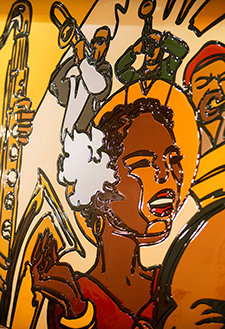
“Our communities are loaded with ‘Storefront Churches.’ But your Harlem Church of Scientology and Community Center is anything but. On this day, the analogy of the seed comes to mind. For when you water it and place it in the right soil, look at what it becomes.
“And so behold this Church that has blossomed before us. May it be a mighty sanctuary for the spirit of Harlem, and every borough of our beloved city!”
Ms. Kimball mentioned it was Mr. Miscavige’s will to realize an L. Ron Hubbard dream for Harlem. In his presentation of the new Church, Mr. Miscavige wasted no time invoking the iconic names that speak of a Black culture so rich and alive that it burst through the usual barriers that race erects. “While this organization is but one in a worldwide ring of such orgs, very much including at Times Square here in New York, the fact is, there is nowhere else like Harlem. Even a mere recitation of the names is humbling: Duke Ellington, Cab Calloway, Billie Holiday, Claude McKay and Louis Armstrong.” Mr. Miscavige continued, “Your renaissance poets, your playwrights, your painters, authors and musicians. You’re talking an unadulterated Harlem style that’s absolutely unmistakable from one end of this planet to another.”
Mr. Miscavige, reflecting on the meaning of a Church of Scientology opening its doors in Harlem, credited the International Association of Scientologists for making a reality of the long-held dream that LRH Technologies can and will lift and inspire an entire minority community that lives in the shadow of social devastation. “A world where the human spirit is depowered, and oblivion is more sought after than a hereafter. A world where virtue becomes passé, and criminality heroic. Where drug abuse, illiteracy and brutality are catastrophic. A world where culture gets lost along the way.”
Invoking Mr. Hubbard, he continued, “But this is also where LRH refined his technologies for human salvage, and of which he wrote, ‘Many answers of life are here—and they are there for Man to use.’ And that is what our new Community Center represents. Not just an offer of help, but rather, our right and obligation to help. Because no matter what makes each of us individuals, we all represent the brotherhood of man, and so, there is no escaping the fact that anyone’s suffering is also our suffering, and that none of us are free unless all of us are free.”
Quoting LRH and the Creed of Scientology, Mr. Miscavige admonished the crowd that, “the souls of men have the rights of men, and that no agency less than God has the power to suspend those rights.”
Finally, as the chant of “Harlem, Harlem, Harlem” swelled through the entire crowd, echoing the heartbeat of this legendary neighborhood and its destiny, Mr. Miscavige said, “We didn’t choose Harlem. Harlem chose us.”
